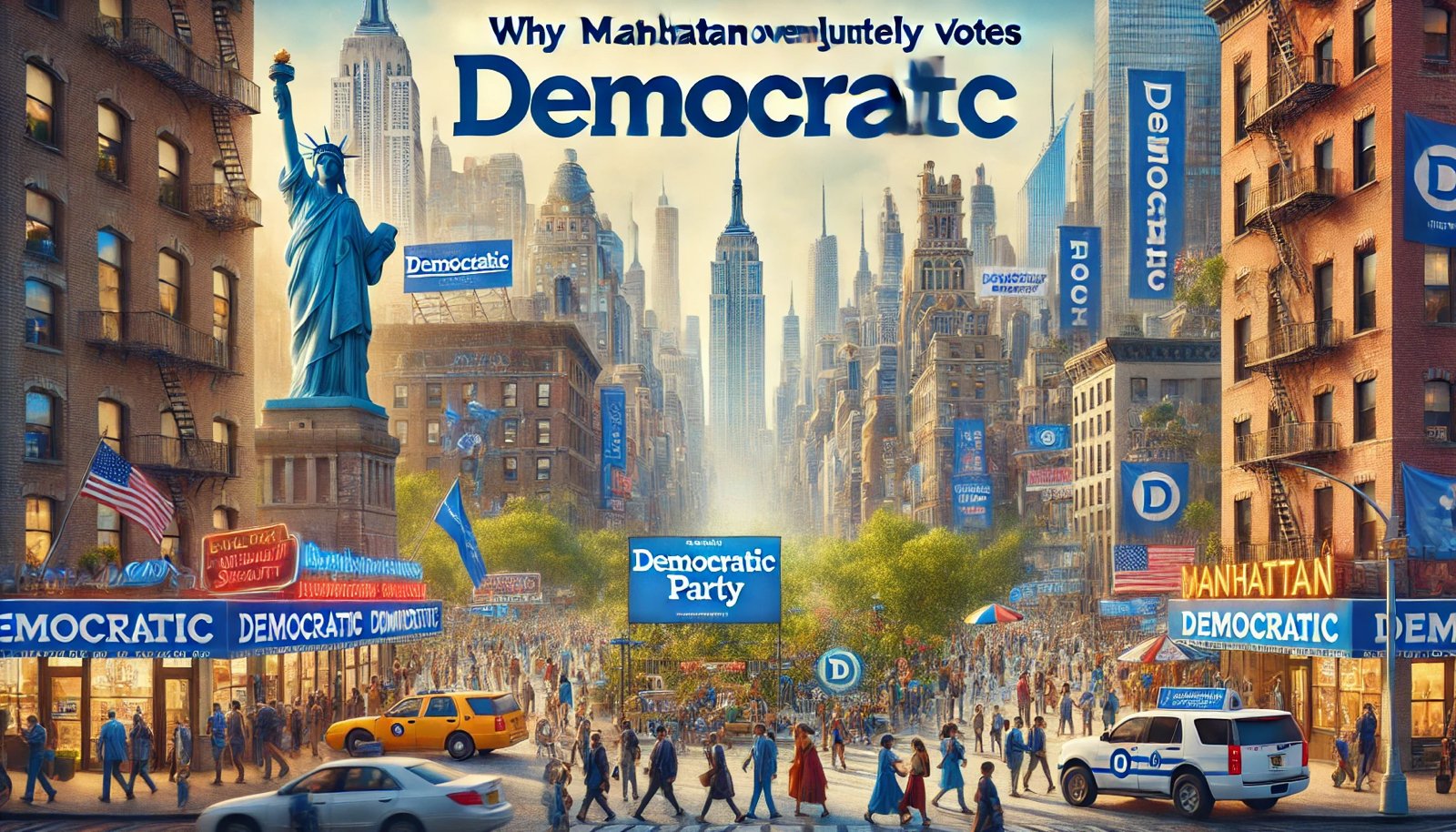Why Does Manhattan Overwhelmingly Vote Democratic?
Manhattan has been a stronghold of Democratic voting for a long time. Of course, these patterns are traced through several social, economic, and historical influences that outline the borough's urban landscape, diverse population, progressive culture, and political infrastructure. What feeds this pattern, and why does Manhattan stand as a stronghold for Democratic candidates election after election?
Historical and Economic Foundations
Historically speaking, New York City as a whole tends to have liberal leanings, but Manhattan has been its mainstay. The borough's orientation politically springs from commanding the top position it occupies as an economic center. Wall Street, the financial district, and the big corporations headquartered here make the city at the very center of not only the state's economy but also the country's. This financial power has drawn everything from immigrants to the highest echelons of the extremely educated elite and has doubtless created a politically progressive environment.
Examples include New York City's Manhattan, where 86.4% voted for the Democrats in the last presidential election, thereby firmly indicating liberal policies. It is not surprising that since the early 2000s, Manhattan has been an unshakeable Democratic stronghold for the president. Urban policies that attract economic inclusivity and equity tend to favor Democratic beliefs in regulation control, social welfare protections, and environmental stewardship.
Demographic and Cultural Diversity
The population in Manhattan is not only of economic influence but also very diversified culturally, ethnically, and in lifestyles. The district harbours a strong spectrum of communities ranging from ethnic minorities, immigrants, and the LGBTQ+ population-these groups tend to be more classically supportive of Democratic ideologies in the face of social equity, equality, and anti discrimination policies-all cornerstone tenets of the Democratic Party platform.
Population density in the borough also, therefore, forms an integral aspect in political leanings of residents. Urban counties like Manhattan and Brooklyn tend to be to the Left side as compared to rural counties. The dense urban environment is an integration of different people, so that progressive thinking and need for social changes are imparted, thereby justifying the solid Democratic leanings of Manhattan.
The Level of Education and Profligacy
If there is a place that is arguably one of the most educated regions in the United States, then it is Manhattan, with many of its residents holding college degrees or more education. A considerable proportion of residents are more likely to vote for liberal policies concerning climate change, immigration, health care, and other issues if political affiliation goes along with educational levels. Cultural institutions like colleges, universities, and museums help popularize progressive views.
Moreover, although Manhattan is said to be wealthy, it also boasts of huge income inequalities. Wealthy communities are likely to vote for democrats since these politicians have socially liberal opinions on, for instance, education reforms and criminal justice reforms and an extension of healthcare. At the same time, poorer classes of residents have also been known to vote for Democratic candidates since the party identifies itself with preserving social welfare programs, as well as securing low-cost housing.
Infrastructure of Grassroots Politics
Grassroots infrastructure in Manhattan goes a long way to explain its pro-Democratic leaning. Democratic campaigns have invested so much in outreach programs reaching all the corners of the city in the last few decades. Voter engagement programs focus on increasing voter registration and mobilizing turnout in Democratic primaries in such bastions as Manhattan.
The political structure of the city of Manhattan consists of several liberal associations and action movements that represent the issues adopted by the Democratic Party, including environmental justice, immigration reform, and rights for LGBTQ+ individuals. These groups are what constantly energize and engage the Democratic voting constituency throughout the entire year that their electorate emerges in large numbers during election time.
The Urban-Rural Divide
The most salient of these factors is, no doubt, the urban-rural divide. Manhattan is the epitome of an urban location, with all the complexity that characterizes such locations: income inequality, homelessness, a diverse population, and a need for robust social services. Rural areas in New York state vote more Republican-limited government intervention being their guiding philosophy, and hence more conservative policies.
Yet, the tremendous population density of Manhattan and other urbanized places in Brooklyn gives the Democrats an immense electoral advantage in statewide contests. Such a population concentration in any city like Manhattan is so tight that in case of the Republican party, it becomes almost impossible for any of those candidates to win. Still, they will probably do better in sparsely settled areas.
The Future of Politics in Manhattan
Given demographic trends, Manhattan is highly unlikely to flip anytime soon in terms of political affiliation. It remains an oasis of the Democratic Party because of its importance in the economy, cultural diversity, and progressive political infrastructure. More importantly, millennials and Gen Z tend to be quite aggressively Democratic on issues of climate change and social justice.
It would be very interesting in the final part of our analysis to note the general political situation of New York City, where boroughs like Queens also provide important support to progressive policies. That businesses such as Sparkly Maid NYC serve a wide swath of the population reflects the inclusivity and diversity that energize the Democratic stronghold both in Manhattan and elsewhere.
Conclusion
Manhattan's dominance to Democrats derives from its historical significance and economic power, besides having the diverse population, high educational levels, and a well-developed infrastructure in politics. After all, as Manhattan is growing and changing, it remains a crucial player in shaping both New York's progressive and national political landscape. Some such businesses that cater to the diversities of the people, such as Sparkly Maid NYC, represent the same kind of diversity and inclusiveness that make this political bastion so vibrant.
